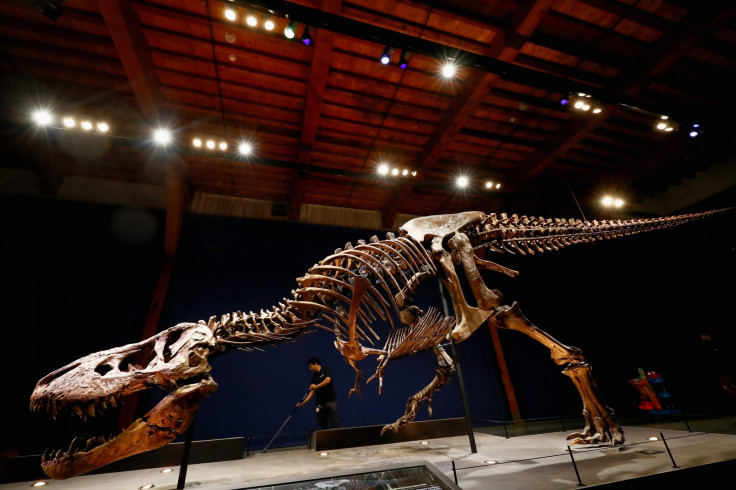The legendary T-Rex was a freckled, feathery ginger with a weak roar
New research has found that the dinosaur would have looked quite different from what we picture as a T-Rex.

The mighty Tyrannosaurus Rex (T-Rex) known as one of the largest and most powerful creatures that roamed the Earth, might not have been so fearsome, at least to look at, after all. New research done on the remains of the apex predator has revealed that the T-Rex was likely to have been a freckled ginger.
A documentary titled The Real T-Rex by BBC2 has found that the animal, while still as powerful and large as popular culture has made it out to be, was quite different to look at. Orange markings around its eyes, black, bushy feathers over its back, and a roar that a Mirror report notes as being barely audible might have characterised the T-Rex.
Freckles might have also been a prominent feature on the beast's skin as the same structures that produced melanin in the skin that causes freckles and tans were found in the fossilised skin of the T-Rex.
In the documentary, using the latest CT scanning techniques, palaeontologists were able to recreate an accurate model of a T-Rex brain. The scans showed that the animal had huge sensory zones in its brain, making it a great hunter. Its inner ears were also designed to hear ultra-low frequency infrasounds, according to the report.
Dr Larry Witmer, who was part of the team that created the scans, said: "In the past when we tried to understand T-Rex and we were looking at the fossils we could learn only so much from the outside. But with the advent of CT scanning, it allowed us to peer inside, to see what was going on. Trying to peer inside the mind of a dinosaur. This is the closest we're going to get to it."
This, however, does not mean that the animal was not in any way as fearsome and dangerous as one would imagine it to be. The T-Rex enjoys the status of being one of the most well known dinosaurs in the world, mainly because of the way it is often portrayed in pop culture. It is hard to think of a dinosaur and not immediately picture a T-Rex.
New information offers more clarity on the nature of the T-Rex and what it might have looked like hunting in prehistoric times. The T-Rex is known to have had one of the strongest bite forces in terrestrial animals. It was powerful enough to crush three cars in one bite, found a study published in May this year. Called extreme osteophagy, the bites were useful for these animals to tear and rip apart flesh, bones and kill with ease. Such powerful bites are recorded in animals like wolves and hyenas in modern times. Crocodiles, however, do not have this quality in spite of being the closest relative to dinosaurs.
The T-Rex is one of the few reptiles to have developed this mammal-like quality, notes a study published in the journal Science Advances. With about 8,000 pounds of force exerted in one bite, a T-Rex could finely fragment bones and derive a lot more nutrition per meal than most other predators of its time, says the report.
"When they ate their prey, such as triceratops, this ability allowed them to eat the flesh but also to get sustenance from the bones, which were rich in bone marrow and mineral salts. Compared to other carnivores, they might have gotten more energy out of their meals – and it may even have played a part in how they got this large," Gregory Erickson, one of the study's authors, told IBTimes UK in May.





















